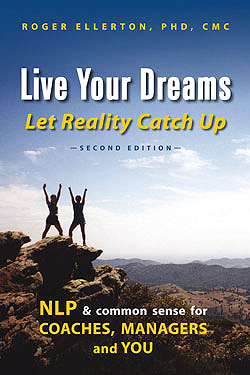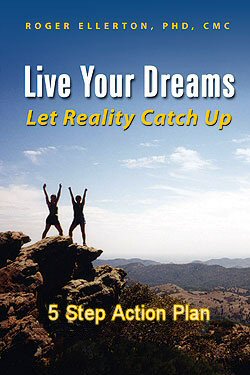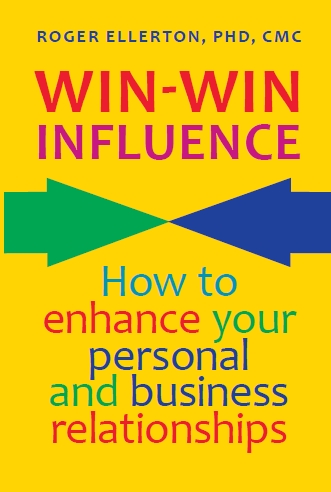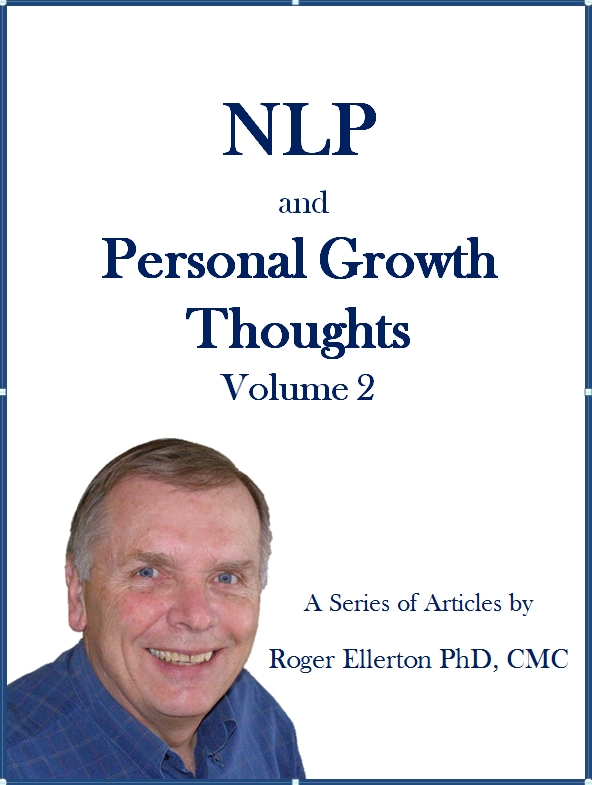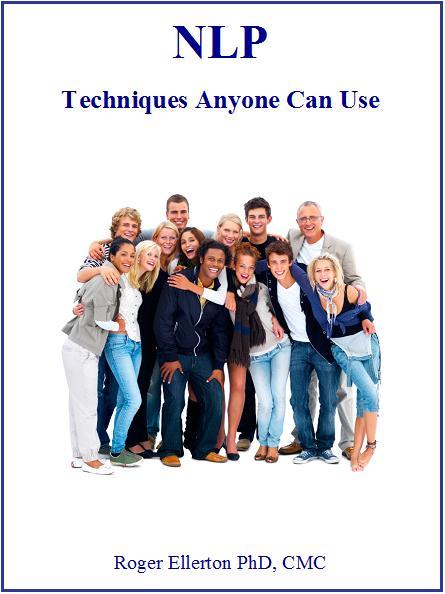Predicates and Lead Representational System
By Roger Ellerton Phd, ISP, CMC, Renewal Technologies Inc.
This article may not be republished without written permission from Roger Ellerton/Renewal Technologies Inc. If you republish this article without permission, you will be in violation of copyright law and sent an invoice. You may share this and other pages with your friends by linking directly to this page from your website or blog.
Predicates
What do you notice about the following four sentences?
- You have shown me a bright idea on how to proceed and I would like to look into it further.
- You have told me of a way to proceed that sounds good and I would like to hear more about it.
- You have handed me a way to proceed that is on solid ground and I would like to get more of a feel for it.
- You have provided me with a way to proceed that makes sense and I would like have more details.
The first sentence uses visual words, the second auditory, the third kinesthetic and the fourth uses words that are not sensory based (auditory digital), yet all four sentences convey the same general meaning.
You use words to describe your thoughts. If your thoughts (internal representations) are mainly pictures, then you will tend to use more visual words when describing your thoughts. If your thoughts are based on logic or making sense of something, you may tend to use words that reflect the logic of your thinking. Likewise, for auditory and kinesthetic. The words you use reflect your internal thought processes. This is a very important point as you are revealing your internal thoughts and thought structures to others through the words you choose to use or not use - more about this in later articles.
In NLP terms, visual, auditory, kinesthetic and auditory digital words are called predicates. The predicates that a person uses will provide you with an indication of the person's preferred representational system.
The following table gives you an idea of some of the different predicates. This is not a complete list. Can you think of other words or phrases that can be added? Notice that some words like fuzzy could appear in more than one column.
| Visual | Auditory | Kinesthetic | Auditory Digital |
|---|---|---|---|
| see look bright clear picture foggy view clear focused dawn reveal illuminate imagine hazy an eyeful short sighted sight for sore eyes take a peek tunnel vision bird's eye view naked eye paint a picture |
hear tell sound resonate listen silence deaf squeak hush roar melody make music harmonize tune in/out rings a bell quiet as a mouse voiced an opinion clear as a bell give me your ear loud and clear purrs like a kitten on another note |
grasp feel hard unfeeling concrete scrape solid touch get hold of catch on tap into heated argument pull some strings sharp as a tack smooth operator make contact throw out firm foundation get a handle on get in touch with hand in hand hang in there |
sense experience understand change perceive question insensitive distinct conceive know think learn process decide motivate consider describe in detail figure it out make sense of pay attention to word for word without a doubt |
You use visual, auditory, kinesthetic and auditory digital predicates all of the time. Some contexts imply the use of one type of predicate, for example if I asked you to describe a picture on your television, you would most likely use visual predicates. And if there is a choice, you will tend to use the predicates from your preferred representational system.
Sometimes We Don't Speak the Same Language.
Have you ever had the occasion to explain something to someone and they said "I don't see what you are saying" or "I can't picture this." What's going on here? One possibility is that they are highly visual and you have been using words other than visual and hence they are having difficulty forming a picture of your explanation in their mind. And how do we usually handle this situation? We repeat the same words over again, only this time LOUDER, as obviously they did not hear us!
Given what you know from this and previous articles, how can you approach this differently so the person can see what you are saying? One possibility is to use visual words to help them make a picture in their mind or you may wish to draw them a diagram or picture.
And of course, it is not just visual people who may have difficulty with your explanation, an auditory person may say "I can't hear what you are saying" or "This doesn't sound right." A kinesthetic person: "I can't grasp what you are saying" or "I don't have a feeling for this." An auditory digital person: "There is no logic in what you are saying" or "This does not make sense".
Pay attention to the words people are using, they are revealing to you how they see, hear, get in touch with or make sense of the world around them.
Exercise 1:
For two minutes, describe your home using only visual words. For the next two minutes use only auditory words. For the next two minutes use only kinesthetic words and for the final two minutes use only auditory digital words. Hint: for visual, you can describe the different colours; for auditory, the different sounds; for kinesthetic, different feelings or textures; and for auditory digital, you can use facts and figures. Notice which modality (or modalities) gives you the most difficulty. These are the ones that you will need to practice. If you want people to clearly see, hear, grasp or understand your message, you need to be able to speak their language.
Exercise 2:
Listen to the predicates that your friends or family members use. They will use a mixture of visual, auditory, kinesthetic and auditory digital predicates and one or two of these will be used more frequently and this is their preferred representational system.
We will discuss rapport in a later article, and rapport with others is very important. One way to increase your rapport with another person is to match the predicates they use. That is, if they use mainly kinesthetic words in their speech, then you should use mainly kinesthetic words when speaking to them.
Lead Representational System
We all have a preferred representational system (some of us have more than one) for our conscious thinking. In order to bring something to our conscious awareness we use a lead representational system. Your lead representational system may be the same as your preferred representational system and it may not.
For example, assume my preferred representational system is visual and my lead representational system is kinesthetic. If someone asks me about my last vacation, I may first get in touch with all of the good feelings about my vacation before fully bringing up the pictures in my mind.
Lead representational systems may vary between contexts. For example, before accessing the feelings associated with a very distressful event, I may choose to first access the event through pictures and hence slowly ease myself into the feelings associated with the event.
And NLP is Much more than that!
Author: Roger Ellerton is a certified NLP trainer, certified management consultant and the founder and managing partner of Renewal Technologies. The above article is based on his book Live Your Dreams Let Reality Catch Up: NLP and Common Sense for Coaches, Managers and You.
Copyright © 2003, Renewal Technologies Inc. All rights reserved.


